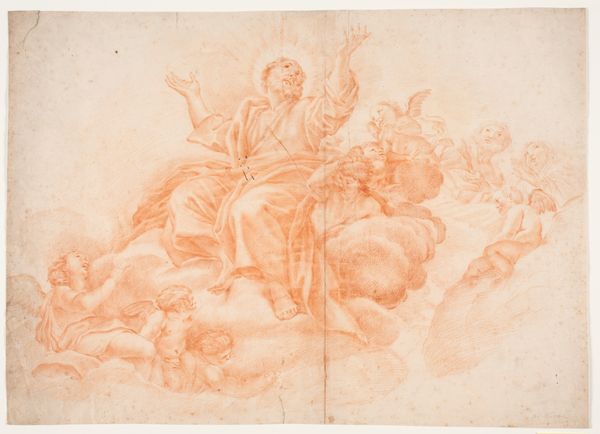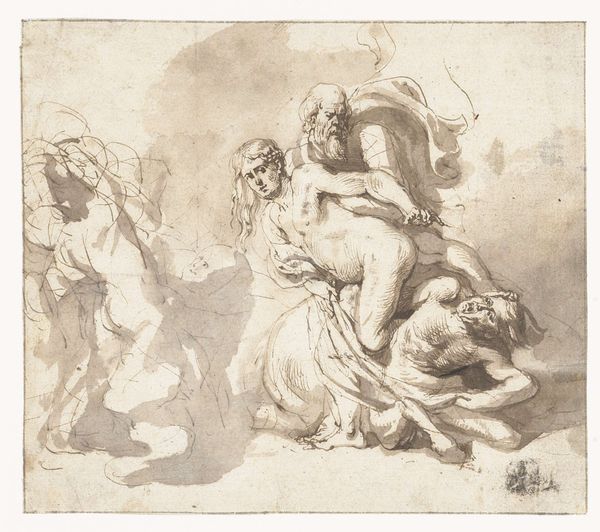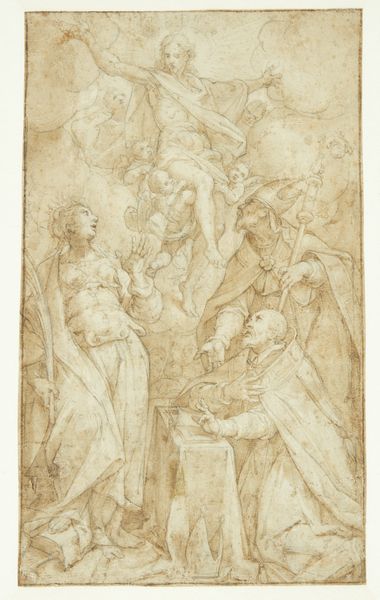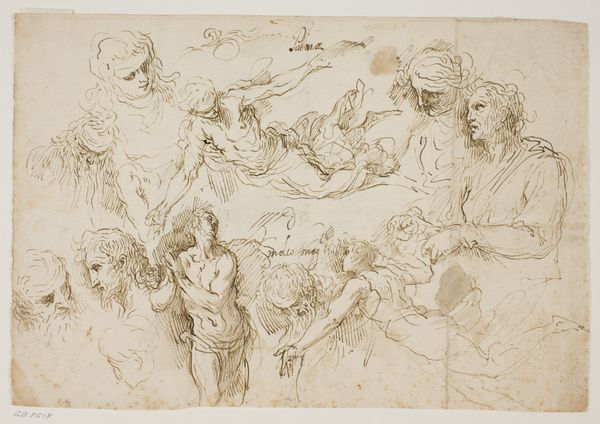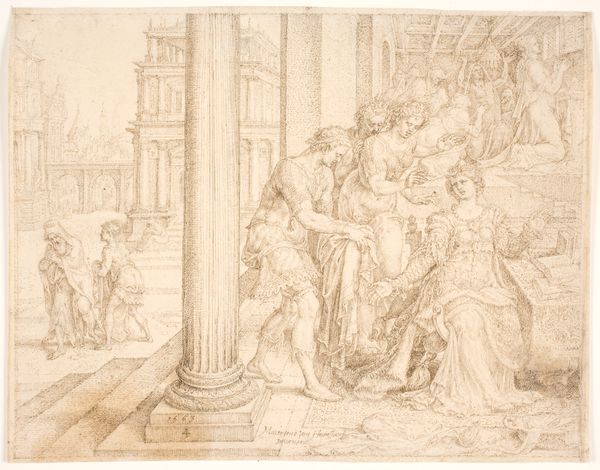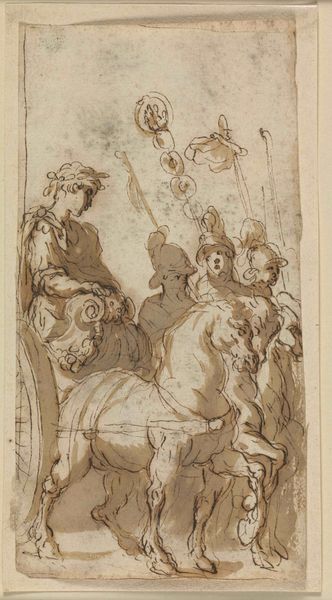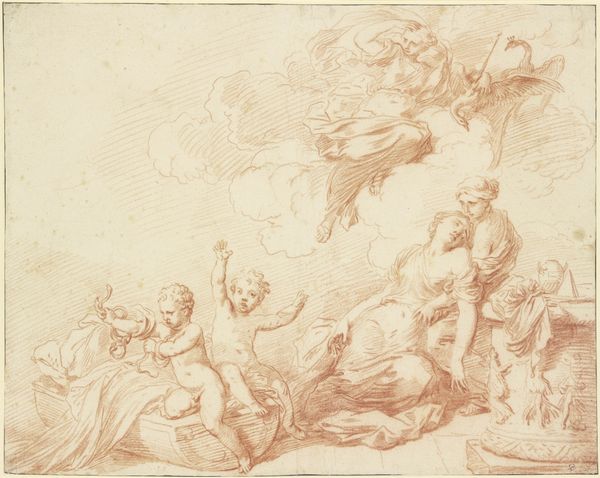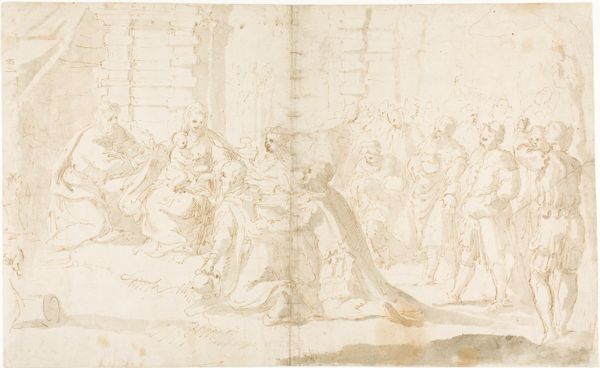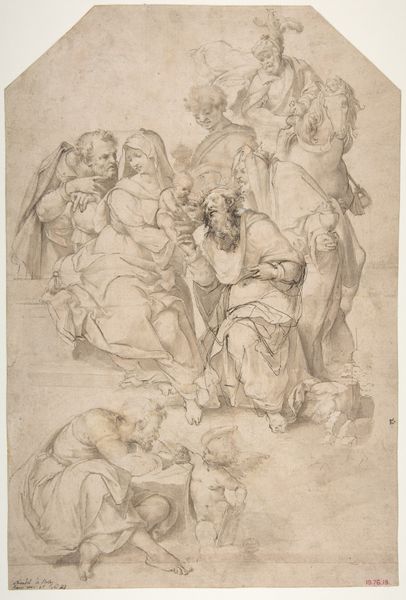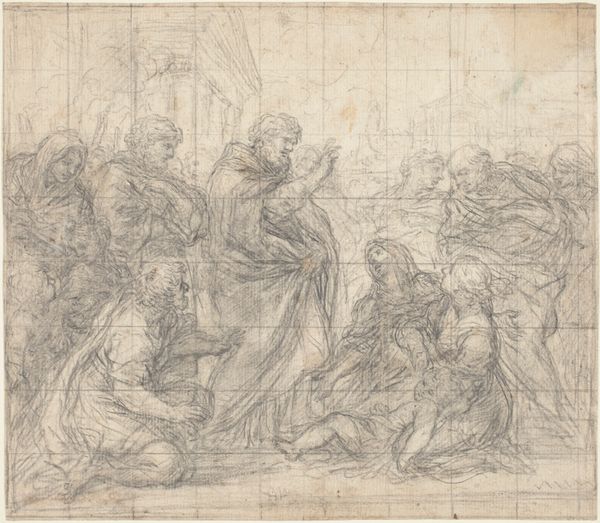
Rebecca at the Well 1620 - 1699
0:00
0:00
drawing, print, paper, ink
#
portrait
#
drawing
#
narrative-art
#
baroque
# print
#
landscape
#
paper
#
ink
#
horse
#
men
#
genre-painting
Dimensions: sheet: 15 x 23 1/2 in. (38.1 x 59.7 cm)
Copyright: Public Domain
Curator: Before us is "Rebecca at the Well," a drawing attributed to Giovanni Benedetto Castiglione, created sometime between 1620 and 1699. It’s currently held at the Metropolitan Museum of Art. What catches your eye about this image? Editor: The fluidity of it, first and foremost. There’s an energetic quality despite the classical subject matter. And is that all ink? The tonal range he achieves is pretty spectacular. Curator: It is primarily done in ink, yes. The scene depicts the biblical story of Rebecca, who, with remarkable generosity, offers water to Abraham’s servant and his camels. It is, in essence, about kindness and fulfilling divine will. Editor: Kindness and the performance of gendered labor. It strikes me that Rebecca’s story, repeated as a lesson in good virtue, is really about the value of women’s unseen labor – in this case, providing essential resources in a patriarchal society. She becomes a symbol of subservience, paradoxically valued and exploited. Curator: Well, it is also a scene that anticipates marriage and the continuation of lineage, quite important in biblical narratives. This meeting at the well becomes an iconographic trope symbolizing destiny and providence. Artists frequently used this narrative to evoke concepts of virtue rewarded. It appears that the meeting happens during the daily chore. The setting certainly adds weight. Editor: The setting definitely complicates things for me. The animals, the people…they all feel more sketched than deeply felt. Is Castiglione using Rebecca and the well as a convenient way to paint a genre scene of 17th-century labor? Because the image feels like it cares about that landscape a lot more than Rebecca’s moral standing. Curator: Perhaps. But I would suggest considering how the scene reflects timeless values and aspirations, visualized here through Castiglione’s masterful depiction. Even though we do not feel her “virtue,” perhaps it still evokes cultural memory within us as to how these characters are rendered, through compositional means but, nevertheless, according to their roles. Editor: I still feel the tension between the narrative’s intention and its effect. The dynamism, the crowd, it’s almost a celebration of labor in a bustling landscape. Perhaps the virtue isn't in the obedience, but in the communal action of keeping everything flowing. Curator: A beautiful thought, seeing labor itself as a form of virtue. Thank you for shedding light on alternative perspectives. Editor: The pleasure was all mine, offering another layer to the image's complexity.
Comments
No comments
Be the first to comment and join the conversation on the ultimate creative platform.

